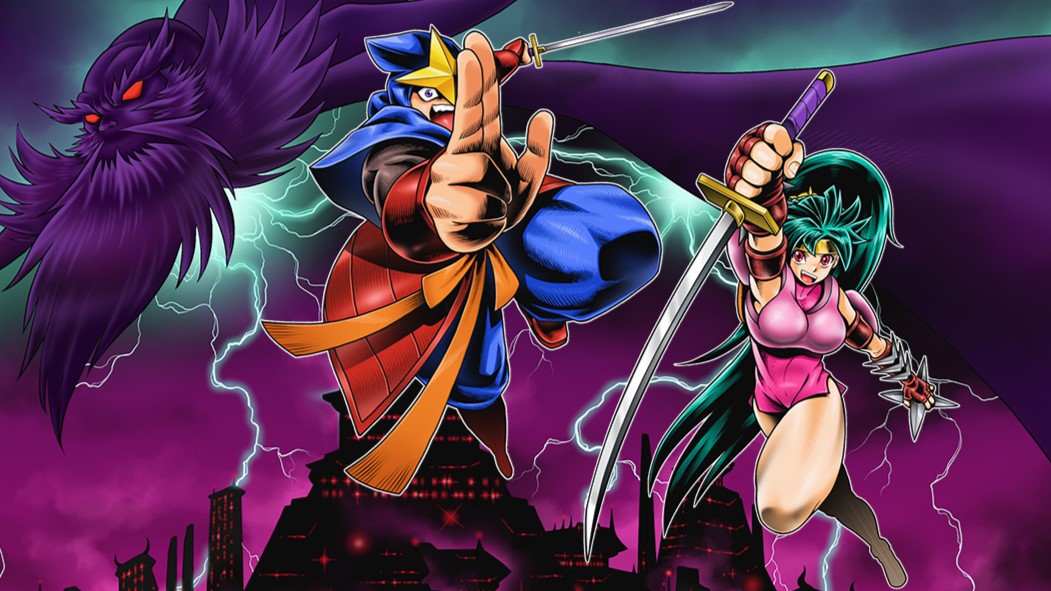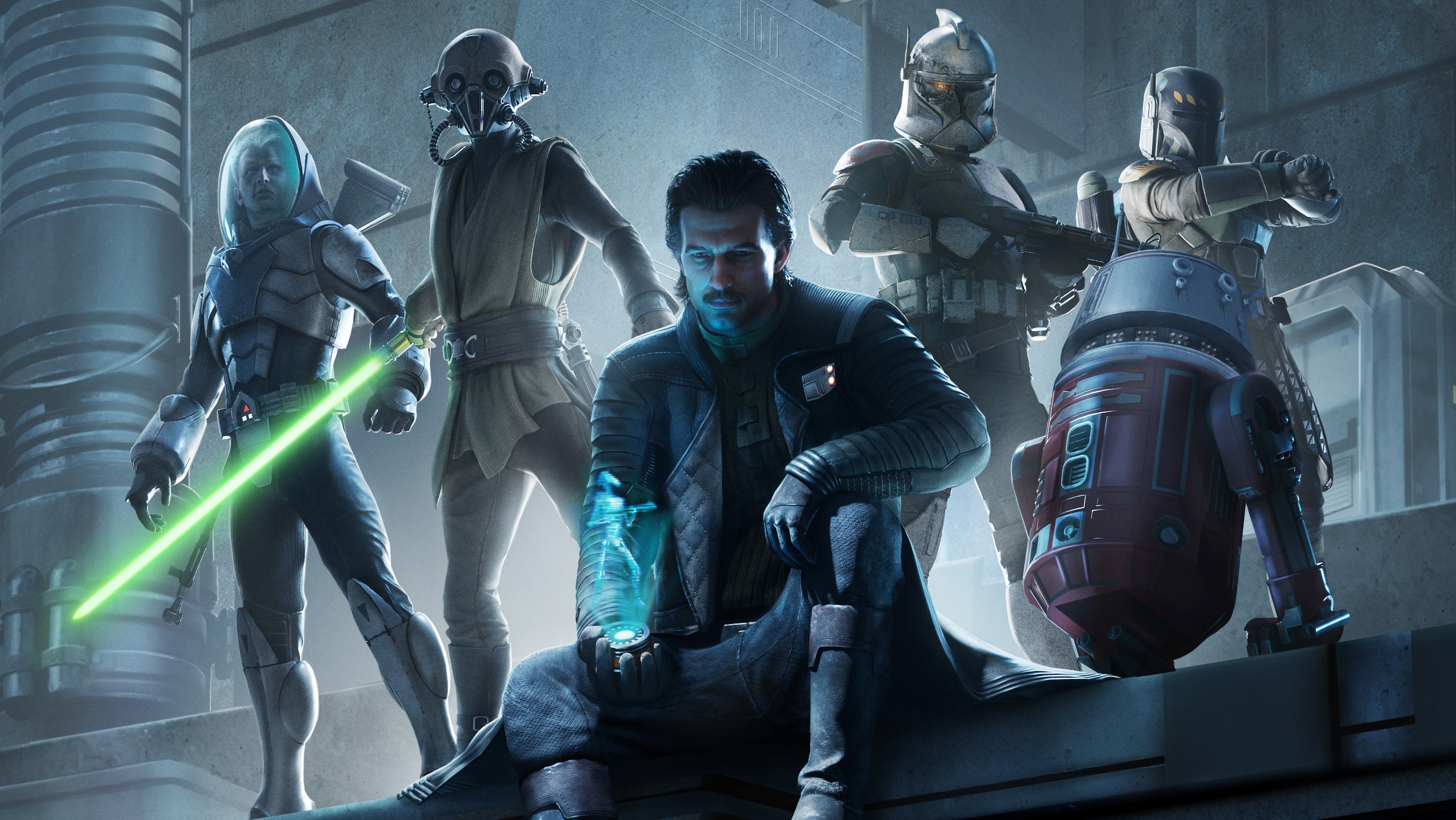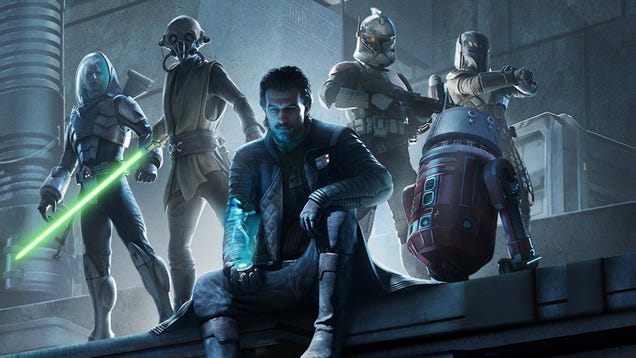
Ninjas reborn, indeed.
Tengo Project’s recent games (such as the pitch-perfect revamps of SNES standouts Wild Guns and Pocky & Rocky) are remakes in the way that John Carpenter’s The Thing is a remake. Is the original still great? Of course. But the new one is just so much cooler.
Retro revivals are a dime a dozen these days; even real Crocs of shite are getting a second chance with rose-tinted hindsight on their side, but a good deal of them fail to surpass the suite of features you can find on any number of volunteer-developed emulators. The gesture is always welcome—any re-release helps course-correct the overwhelming majority of games being unplayable without piracy—but a remake is as much an opportunity to make something new as any other release. Enter Shadow of the Ninja – Reborn, which takes a solid B-tier NES game and juices it up with so many new ideas and visual flourishes it’s practically a whole new game.
Shadow of the Ninja is a good NES game, but it always lived in the shadow of a different ninja: Ninja Gaiden, which ended up being so much more popular that when Tecmo planned to bring Shadow of the Ninja to the Game Boy, it scrapped the idea entirely and put the team to work on a game called Ninja Gaiden Shadow instead. But to be frank, I kind of prefer Shadow to its big brother. Gaiden’s ruthless difficulty is charming, but Shadow is comparatively relaxed and a lot more playable as a result.
Now that I’ve written the words “shadow” and “ninja” so many times I’ve forgotten what they mean, let me get into the remake itself. It’s a 2D platformer like a lot of games from this era, but it’s less about tricky jumps and dodging bullets and more about precise acrobatics and a massive arsenal of pickups.
(Image credit: NatsumeAtari)
(Image credit: NatsumeAtari)
(Image credit: NatsumeAtari)
(Image credit: NatsumeAtari)
(Image credit: NatsumeAtari)
(Image credit: NatsumeAtari)
(Image credit: NatsumeAtari)
The two playable ninjas, Hayate and Kaede, are not particularly fast or nimble, which might sound like it makes for a sluggish platformer, but it’s made up for by granularity in how you move. You can’t sprint around or cancel out of animations easily, but you’ll dangle from ceilings, balance atop the hilt of your sword, climb up and leap from walls, and spin to briefly hover in midair for maximum maneuverability. There’s a satisfying sense of progression as you go from clumsily running into everything while wildly flailing your sword, to seeing a screen of enemies and swiftly taking them out one-by-one by using the environment and your movement in tandem.
There’s also a much funnier sense of progression when you trade your katana for a pump-action shotgun, which is where this remake’s gargantuan arsenal of items comes in. Reborn retains the original two primary weapons you always have on you: the sword, which slowly gains reach and damage output as you build up power, and the kusarigama, a ranged spiky chain sickle which hits several enemies at once and packs a serious wallop at a particular sweet-spot. These are truly the only weapons you need to get through the game, but that doesn’t stop it from throwing everything but the kitchen sink at you:
Brass blunderbussesThrown shurikensHealth-restoring baguettesA modern shotgunTitanic mauls and clubsCaltropsA handheld ship’s cannonHoming chakrams
It’s all here, and it all comes in clutch at the right moment. I was reminded of Doom Eternal whenever I walked into a room with a full arsenal, quickly deciding which weapon would shred through each enemy the most efficiently. None of this stuff is in the original game, and really opens up your options to clear each level and amps up replayability. Also new to the remake is the gear catalog; as you accumulate items, you also accumulate cash. The next time you start up a playthrough, you can spend that cash on a starting loadout to give yourself an edge. Between this and the built-in time attack mode, I think speedrunners will have a ton to dig into.
Shadow of the Ninja – Reborn is only six levels (one more than the NES original), but each is split up into several stages and they are dense enough to feel satisfying in short bursts. Difficulty ramps up sharply over time, but so does your array of items, and unlike most NES games you won’t be kicked back to stage one after dying too many times. It’s accessible, and never obstructed me from slowly mastering the movement and probing levels for secrets.
Shadow of the Ninja – Reborn takes a rock-solid, if aged, foundation and builds it out into a mechanically rich and beautiful modern action platformer. It’s not a revolution by any means, but if you want to experience a bit of revamped console gaming history, want to practice your side scrolling movement for that new Shinobi game, or just want something intensely replayable for your Steam Deck, it’s hard to do much better than Reborn.






